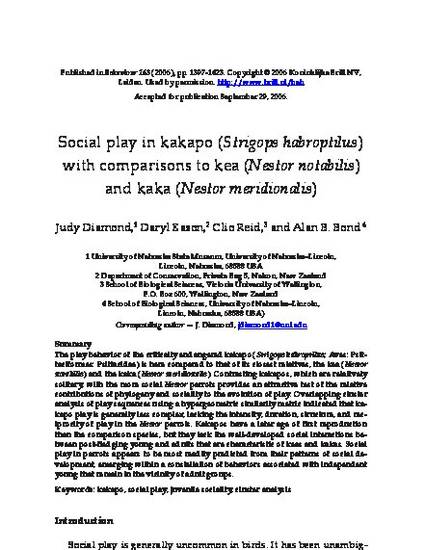
The play behavior of the critically endangered kakapo (Strigops habroptilus; Aves: Psittaciformes: Psittacidae) is here compared to that of its closest relatives, the kea (Nestor notabilis) and the kaka (Nestor meridionalis). Contrasting kakapos, which are relatively solitary, with the more social Nestor parrots provides an attractive test of the relative contributions of phylogeny and sociality to the evolution of play. Overlapping cluster analysis of play sequences using a hypergeometric similarity metric indicated that kakapo play is generally less complex, lacking the intensity, duration, structure, and reciprocity of play in the Nestor parrots. Kakapos have a later age of first reproduction than the comparison species, but they lack the well-developed social interactions between post-fledging young and adults that are characteristic of keas and kakas. Social play in parrots appears to be most readily predicted from their patterns of social development, emerging within a constellation of behaviors associated with independent young that remain in the vicinity of adult groups.
Available at: http://works.bepress.com/alan_bond/9/